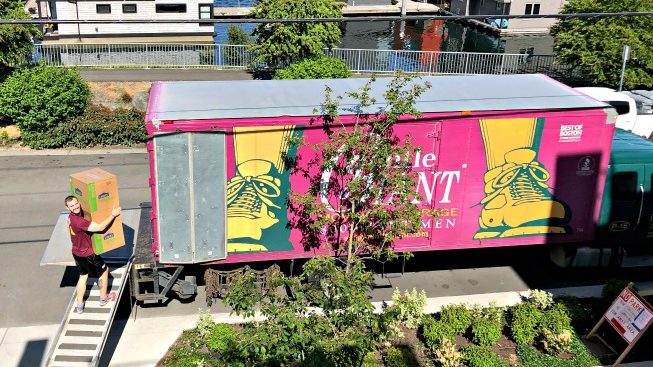
As professionals in the moving industry with nearly 40 years of experience, we have a few tricks up our sleeves when it comes to how to move your valuable items with ease, including precious pieces such as artwork.
When it comes to preparing artwork for your move, the key is making sure your items are packed properly to avoid damage. Here are our tips for packing and moving artwork seamlessly.
Tip #1: Notify your move consultant about your artwork
Prior to your moving day, alert your move consultant of any high-value artwork, either financial or sentimental high-value. By alerting your moving team ahead of time, they can make sure your movers bring out the proper materials needed to move your artwork successfully.
When possible, offer the dimensions of the artwork to your move consultant and coordinator so they understand the scope of what will need to be moved. Often, smaller framed photos of friends and family can simply be packed into a box.
Tip #2: Consider the size of the items you are packing
For artwork small enough to fit into a 5.2 cube-sized box or smaller, these items can be packed away with adequate cushioning above and below the piece. The items should not be packed away with cushioning in the front or back of the piece, and they should always stand upright on their short edges.
When packing multiple items, if there are enough of one general size to fill most of a small box, feel free to do this to save space. For packing many items diverse in size, consider packing them all into a 5.2 cube-sized box as well, but start with the largest ones first, then move on to the smaller ones.
Tip #3: Ensure your pieces are protected appropriately while packing
Your artwork will need to not only be packed in durable boxes, but with added protection as well via packing paper. Always set up bumpers and picture frames at perpendiculars in order to avoid the items slipping past each other.
It is also important to have protection in between frames, so use one to two sheets or flat white packing paper as a barrier in between items.
Tip #4: Align your frames properly to prevent damage
Your frames should be packed into their box with their fronts always facing one another. This will also mean the backs will be facing each other as well when loading multiple frames into one box. Most damage-causing hardware on frames is usually located on the back of the frame, so by aligning them in this matter, you’ll make sure none of the frames are lined up back to front, which can cause damage to all sides of the frame, especially if packed without enough bumper protection.
It is also important to make sure your framed items are never leaning in the box, as this will lead to uneven pressure being applied to the delicate flat surface found on the front of the piece.
Tip #5: Eliminate the use of bubble wrap when self-packing
Many homeowners strive to help their moving company by pre-wrapping their artwork in bubble wrap during the packing process. While the bubble wrap itself can be helpful, the movers may need to unwrap and inspect your artwork for pre-existing damage before moving begins. This creates more work for both the customer and the movers and could potentially cost more to the homeowner if the bubble wrap is damaged during unwrapping.
The best way you can help your moving company prepare to move your artwork is to provide your move coordinator with accurate descriptions and sizes of your items. The movers will then know exactly what they should expect before they even walk through the door.
For any additional questions about moving artwork, never hesitate to call your move coordinator who is available to guide you in the right direction during your packing process. Also, see our videos for more packing advice and see more moving tips here. Best of luck!

